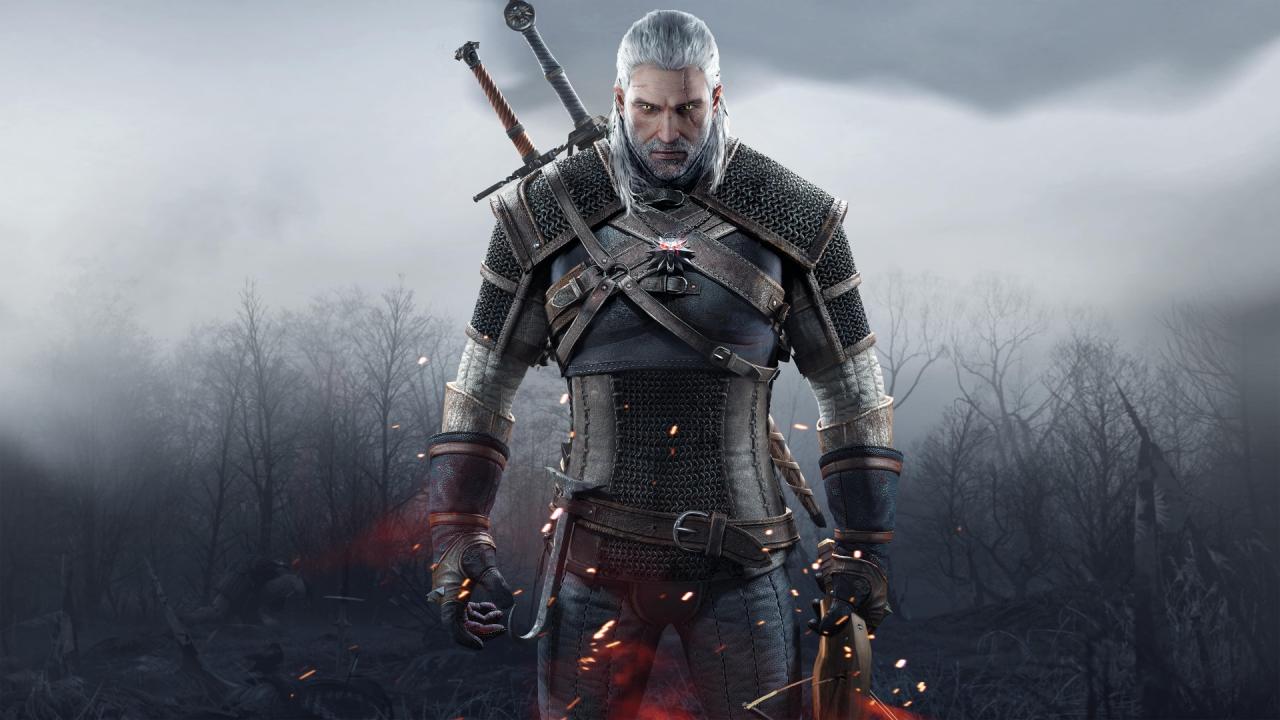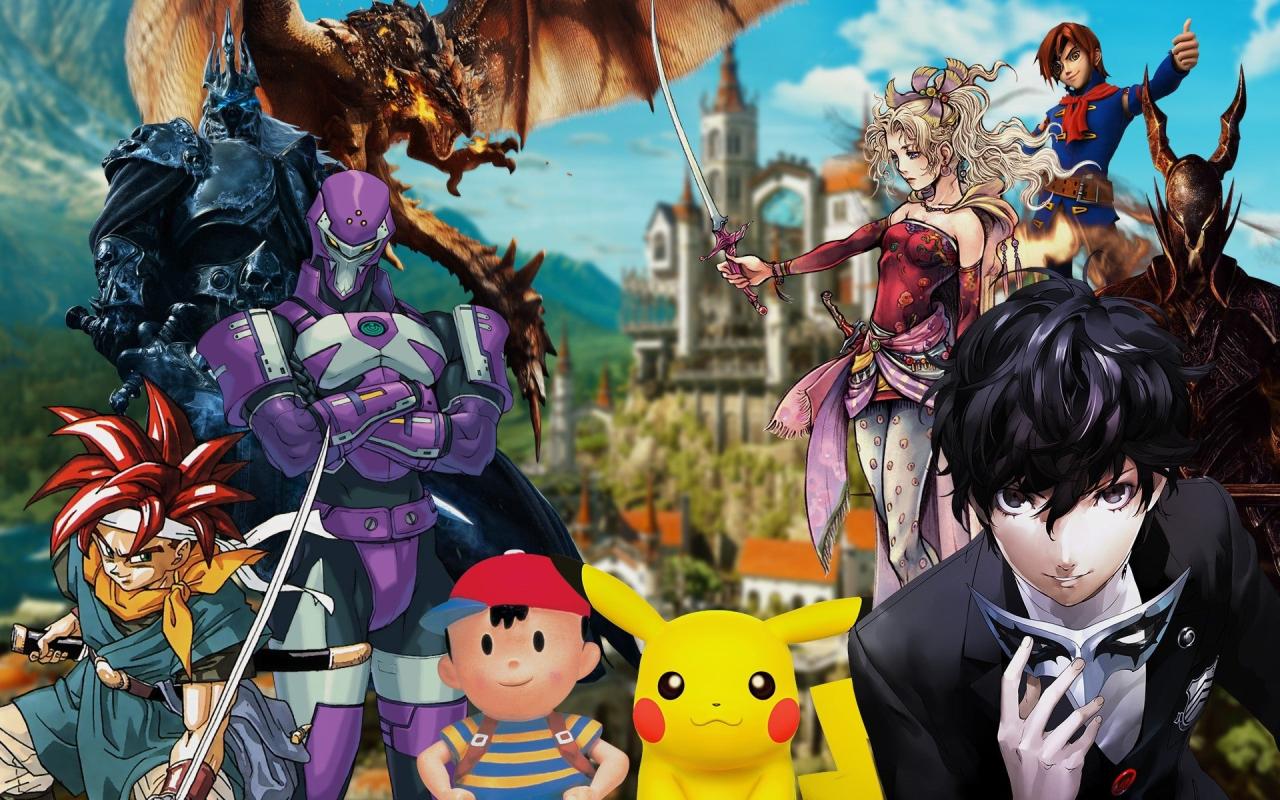The Role-Playing Game, or RPG, stands as one of the most beloved and complex genres in video game history, offering players unparalleled depth in storytelling, character progression, and world exploration.
From the classic dungeon crawls of yesteryear to the massive, sprawling open worlds of modern epics, the appeal of stepping into a new persona and influencing a richly crafted narrative remains timelessly compelling. Choosing your next great RPG adventure, however, can feel like navigating an ancient, sprawling labyrinth itself, given the genre’s immense breadth and diversity.
This category isn’t a single lane; it’s a vast highway with branching paths that include everything from Western RPGs (WRPGs) focusing on player choice and sandbox freedom to Japanese RPGs (JRPGs) celebrated for linear, cinematic stories and turn-based combat systems.
Furthermore, the modern RPG landscape is constantly being reshaped by action-focused combat, roguelike elements, and the rise of compelling indie titles, making the task of identifying a truly suitable game both exciting and potentially paralyzing.
To truly maximize your enjoyment and commitment to a genre often requiring hundreds of hours, you need a precise, focused methodology for finding the specific kind of adventure that will resonate deepest with your individual preferences and time constraints.
This comprehensive guide will break down the RPG genre into its core components, providing a structured approach to finding your perfect next legendary tale, ensuring you spend less time searching and more time questing in unforgettable virtual realms.
Decoding the RPG DNA: Core Components

The first step in effective RPG recommendation is to understand the fundamental mechanics that define the genre, allowing you to filter games based on what you find most engaging.
A. Combat System Preference
The way you fight is arguably the most crucial decision point in the RPG world.
A. Turn-Based Combat: This system is often found in classic JRPGs and emphasizes strategic planning over reaction speed. You carefully select actions for your party members, considering elemental weaknesses and status effects. Games in this style include Final Fantasy X and Dragon Quest XI.
B. Action-Real-Time Combat: This style demands quick reflexes, skillful dodging, and precise timing, feeling more like a traditional action game. The focus is on player control during the fight rather than menu navigation. Notable examples are Kingdom Hearts and The Witcher 3.
C. Real-Time with Pause (RTwP): This hybrid system allows the action to play out in real-time but lets you pause the game at any moment to issue detailed commands to your party. It blends tactical depth with the pace of real-time action. This is the hallmark of games like Baldur’s Gate and Pillars of Eternity.
D. Tactical Grid Combat: Found in sub-genres like Strategy RPGs (SRPGs), combat takes place on a grid map where movement, positioning, and facing direction are vital. Games such as Fire Emblem and Final Fantasy Tactics use this model.
E. Hybrid and Unique Systems: Some modern titles creatively mix these elements, such as the Final Fantasy VII Remake‘s fusion of action and tactical menu use, offering a blend of experiences.
B. Character Progression and Customization
How your character grows and whether you can create them are central to the RPG experience.
A. Fixed Protagonist: Many JRPGs and narrative-heavy WRPGs feature a pre-written main character with a defined personality and background. The focus is on experiencing their specific, often deeply emotional journey. Examples include Geralt in The Witcher and many Final Fantasy heroes.
B. Player-Created Avatar: These games allow you to design your character’s appearance, choose their class, and define their personality through dialogue choices. This fosters a high degree of immersion and personal role-playing. Skyrim and Mass Effect are prime examples.
C. Class-Based Systems: Traditional RPGs often lock skills and progression paths into predefined classes like Warrior, Mage, or Rogue. This provides structure but limits flexibility.
D. Classless/Skill-Based Systems: These systems allow players to invest experience directly into skills or proficiencies, letting them fluidly develop their character into unique multi-class builds. Games like Fallout and The Elder Scrolls often employ this design.
E. Party Management: Do you prefer to control a single hero, or do you enjoy managing a diverse team of specialized companions, often referred to as a “party”?
C. World Structure and Exploration
The scope and nature of the game world heavily influence the feeling of adventure.
A. Open World: These massive games offer non-linear exploration, side quests, and hidden locations, inviting players to wander freely. They prioritize player agency in defining the pace. Elden Ring and Genshin Impact epitomize this.
B. Linear/Hub-Based: Found often in classic JRPGs, the game guides the player through distinct, enclosed areas or smaller hub zones in a fixed order. The focus is on a tight, cinematic story experience. Final Fantasy XIII is a classic linear example.
C. Procedurally Generated (Roguelikes/Lites): Each playthrough is unique, with maps, loot, and enemies randomly generated upon starting a new run. Games like Hades or Diablo‘s randomized dungeons fall into this category, focusing on replayability.
D. Dungeon Crawler: The game is structured around systematically exploring complex, often claustrophobic, mazes or underground locations, with a focus on resource management and combat encounters. Etrian Odyssey is a pure example of this style.
E. Environmental Density: Do you prefer a vast, empty world with travel time, or a compact, densely packed world where every corner holds a secret?
Categorizing the Major RPG Sub-Genres
Understanding the main categories of RPGs helps narrow down the search significantly, as each sub-genre carries its own set of expectations.
A. Western RPGs (WRPGs)
WRPGs generally prioritize player choice, consequence, and non-linear quest design.
A. Player Agency: The defining trait is the freedom to define your character’s morality and influence the world’s narrative outcomes.
B. Deep Lore: They often feature rich, detailed fantasy or sci-fi settings with extensive background lore delivered through dialogue and codex entries.
C. Focus on Dialogue: Extensive branching dialogue trees are common, allowing for multiple resolutions to a single problem.
D. Character Focus: WRPGs typically offer robust character creation tools, allowing you to fine-tune appearance, background, and stats.
E. Prominent Examples: The Elder Scrolls V: Skyrim, Fallout: New Vegas, and Divinity: Original Sin 2.
B. Japanese RPGs (JRPGs)
JRPGs are known for their strong emphasis on pre-written narratives, stylized aesthetics, and mechanical complexity.
A. Cinematic Storytelling: Stories are often emotionally charged, featuring fixed, memorable main characters and a large, ensemble cast.
B. Distinct Visual Style: JRPGs frequently boast highly stylized anime or manga-inspired aesthetics and character designs.
C. Turn-Based Legacy: While many have transitioned to action, the genre’s roots are firmly in traditional turn-based combat systems.
D. Grinding Mechanics: Progression often relies on deliberate level grinding, especially during difficult boss encounters, to succeed.
E. Prominent Examples: Persona 5, Final Fantasy XVI, and Tales of Arise.
C. Massively Multiplayer Online RPGs (MMORPGs)
These games are massive, persistent worlds shared by thousands of players, emphasizing community and long-term commitment.
A. Social Focus: Group content like raids, dungeons, and PvP battles forms the core of the late-game experience.
B. Live Service: They are constantly updated with new expansions, quests, and features, providing an endless stream of content.
C. Economy: Player-driven economies, crafting, and trading are complex systems within the game world.
D. Time Sink: MMORPGs demand a significant investment of time to reach the highest levels and experience the best content.
E. Prominent Examples: World of Warcraft, Final Fantasy XIV, and Guild Wars 2.
D. Action RPGs (ARPGs)
While the term often overlaps, ARPGs specifically denote games where combat is the primary focus, and the real-time elements are fast and visceral.
A. Loot Focus: These games center on killing enemies to acquire randomized gear and powerful items, driving endless replayability.
B. Build Diversity: The fun comes from experimenting with different character builds and combinations of gear and skills.
C. Isometric View: Many classic ARPGs feature a top-down, isometric perspective, enhancing the focus on positioning and AoE skills.
D. Repetitive Grind: The core loop involves repeating content, often in higher difficulty tiers, purely for the chance of better loot drops.
E. Prominent Examples: Diablo IV, Path of Exile, and Monster Hunter World.
Refining Your Search: The Deep Filter
Once you have a general genre idea, use these deeper, thematic filters to zero in on truly compatible titles.
A. Narrative Depth and Length
Consider how much story you want and how long you are willing to commit.
A. Epic Saga: Are you looking for a game that will take 80-150 hours to complete the main story, providing a truly massive narrative experience?
B. Focused Story: Do you prefer a tighter narrative that wraps up in 30-50 hours, prioritizing pacing over sheer size?
C. Lore vs. Action: Decide if you want heavy, long-winded dialogue and world-building texts, or if you prefer the story to be told primarily through action and visual presentation.
D. Ending Impact: Are you seeking a game with multiple, highly variable endings based on your decisions, or a game with a singular, satisfying conclusion?
E. Tone Preference: Filter based on tone, distinguishing between gritty, morally grey adult narratives versus bright, hopeful, or whimsical stories.
B. Artistic Style and Aesthetic
The visual presentation is key to prolonged engagement in an RPG.
A. Photo-Realistic Graphics: Do you prioritize cutting-edge graphical fidelity and a realistic art style that pushes current hardware limits?
B. Stylized and Cartoonish: Do you prefer a distinct, non-realistic art style that remains visually appealing over time, often aging better than realistic graphics?
C. Pixel Art and Retro: Are you a fan of deliberately retro 2D or 3D aesthetics that evoke nostalgia for classic console RPGs?
D. Western vs. Eastern: Look for the core design philosophy, such as the heavy armor and grim fantasy of WRPGs versus the often colorful, sleek designs of JRPGs.
E. Soundtrack Importance: Assess reviews for the quality of the musical score, as a great soundtrack is integral to the emotional weight of an RPG narrative.
C. Difficulty and System Complexity
RPGs vary wildly in how much mental effort they demand.
A. Casual Accessibility: Are you looking for a game that is easy to pick up, where build optimization is optional, and the combat is generally forgiving?
B. Hardcore Challenge: Do you desire a game with punishing difficulty, demanding intricate build planning, resource management, and precise execution?
C. System Depth: Filter by the number of interconnected systems, such as complex crafting, item enhancement, pet management, or intricate skill trees that require heavy theory-crafting.
D. New Player Friendly: If you are new to the genre, prioritize games with excellent tutorials and clear explanations of mechanics to ease the learning curve.
E. Meta-Game Required: Does the game require constant external research (reading wikis, watching guides) to understand the best builds, or is all necessary information presented clearly within the game?
Strategic Sourcing for RPG Recommendations
Relying on a single source for recommendations is a common mistake; a balanced strategy is crucial.
A. Community Consensus and Forum Dive
The most passionate RPG fans often reside in dedicated online communities.
A. Subreddit and Forum Search: Spend time on specific game subreddits and forums to find detailed discussions about late-game builds and content, which reveals the true depth.
B. “Underrated” Threads: Look specifically for threads asking for “underrated gems” in a certain RPG sub-genre, as these often highlight titles missed by mainstream coverage.
C. Avoid Hype Cycles: Be cautious of recommendations made immediately after a game’s release, as initial excitement often overlooks long-term flaws or repetition.
D. Build Guides as Research: Searching for character build guides can reveal the complexity and diversity of the game’s core mechanics before you buy it.
E. Compare “Must-Play” Lists: Cross-reference “best of” lists from multiple trusted gaming websites or critics to identify games that consistently appear across various sources.
B. Focused Content Creator Reviews
Look for reviewers who specialize in the RPG genre, as they understand its unique nuances.
A. Specialist Reviewers: Find YouTubers or streamers who focus almost exclusively on RPGs, as their frame of reference is much deeper than a generalist reviewer.
B. Long-Term Retrospectives: Pay close attention to reviews or retrospectives released six months to a year after a game’s launch, as they address long-term stability and replayability.
C. Early Access Insight: For indie or smaller titles, follow developers’ blogs or Early Access reviews to gauge the commitment and direction of the project.
D. Demo and Trial Videos: Search for “Let’s Play” videos that cover the first few hours of the game to see if the introductory pacing and mechanics appeal to you.
E. Thematic Review: Seek out reviews that discuss the game’s themes and narrative message, ensuring the story tackles topics you find compelling.
C. Leveraging Digital Store Features
Platform tools offer data-driven insights tailored to your history.
A. Steam Tags and Categories: Utilize the specific and granular user-defined tags on platforms like Steam (e.g., “Gothic,” “CRPG,” “Great Soundtrack”) to filter precisely.
B. “Time Played” Filter: On platforms that show user reviews, prioritize reviews from players who have logged a significant amount of playtime, as they have experienced the full scope of the game.
C. Refund Policy Test: Use the platform’s refund policy (typically allowing two hours of playtime) as a personal, risk-free demo for games without an official trial.
D. Price vs. Hours Ratio: Calculate the potential value of the game by comparing its cost to the estimated playtime necessary to complete the main content.
E. Wishlist as a Tracker: Actively use the wishlist feature on platforms like Steam or GOG to track price changes and receive notifications about games fitting your profile.
Avoiding Common RPG Recommendation Pitfalls

A successful strategy involves knowing what biases and traps to avoid.
A. The Hype Trap
Don’t let massive marketing campaigns overshadow fundamental flaws or genre mismatches.
A. Initial Scores: Ignore reviews that praise only graphics or short-term novelty, focusing instead on commentary about long-term gameplay loop issues.
B. Blind Loyalty: Never buy a game solely because it belongs to a beloved franchise; evaluate each installment on its own merits and design choices.
C. Popularity Skew: Just because a game has millions of players does not mean it is the right game for you, especially if you dislike MMOs or competitive content.
D. Launch State: Be extremely cautious of large RPGs at launch, as they are often prone to bugs and technical issues that can severely hamper the experience.
E. Over-Promised Features: Look for concrete gameplay footage and verified user experiences, rather than relying on developer promises for future content or fixes.
B. The Nostalgia Barrier
Be careful not to recommend games solely because of your own fond memories of them.
A. Modernizing Classics: Recognize that older, beloved RPGs may feel clunky, slow, or graphically unappealing to a modern player unfamiliar with the era.
B. UI/UX Issues: Be aware that the User Interface and User Experience of older titles can be complex and frustrating, acting as a high barrier to entry.
C. Accessibility: Ensure that any classic RPG recommendation has modern patches, fan translations, or quality-of-life mods available if the original experience is too dated.
D. Unfair Difficulty: Many older RPGs were designed with arbitrary difficulty spikes or required frustrating grinding, which may not align with modern expectations.
E. Time Commitment Risk: Classics often demand more patience and time than their modern counterparts, which needs to be explicitly communicated to the potential player.
Conclusion
Finding the perfect role-playing game is truly an art form that merges deep self-awareness with rigorous research.
The RPG genre is immense, requiring a structured approach to selection. Knowing your preferred combat style is the single most important filtering step. Whether you crave narrative depth or mechanical complexity must be clearly established.
Western and Japanese RPGs offer fundamentally distinct design philosophies for players to consider. Utilizing platforms, specialist reviews, and community insights provides the best data.
A great RPG is one that perfectly aligns with your available time and emotional investment. Filtering out the hype and avoiding recommendation biases leads to much greater satisfaction. This organized process ensures you consistently embark on truly fulfilling digital adventures.







